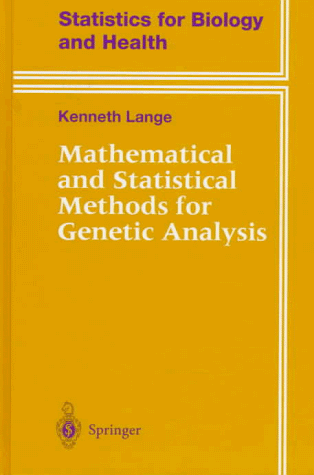Statistics for Biology and Health
1 total work
During the past decade, geneticists have constructed detailed maps of the human genome and cloned scores of Mendelian disease genes. They now stand on the threshold of sequencing the genome in its entirety and the unprecedented insights into human disease and evolution offered by mapping and sequencing will transform medicine and agriculture. This revolution depends vitally on the contributions of applied mathematicians, statisticians and computer scientists. This book is designed to equip graduate students in the mathematical sciences with the knowledge needed to understand and model the epidemiological and experimental data encountered in genetics research. Mathematical, statistical and computational principles relevant to this task are developed hand in hand with applications to gene mapping, risk prediction, and the testing of epidemiological hypotheses.
